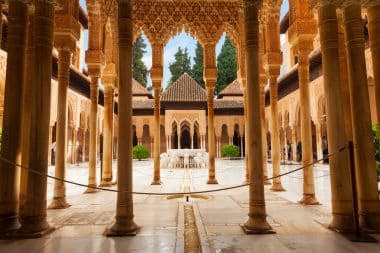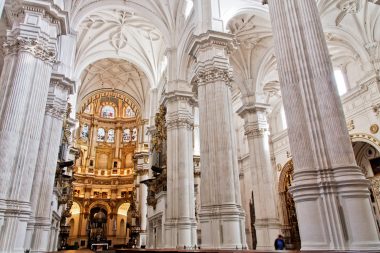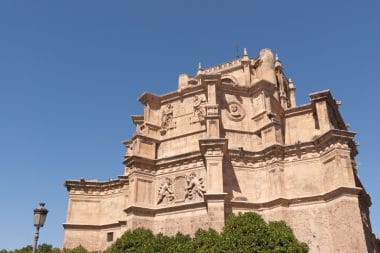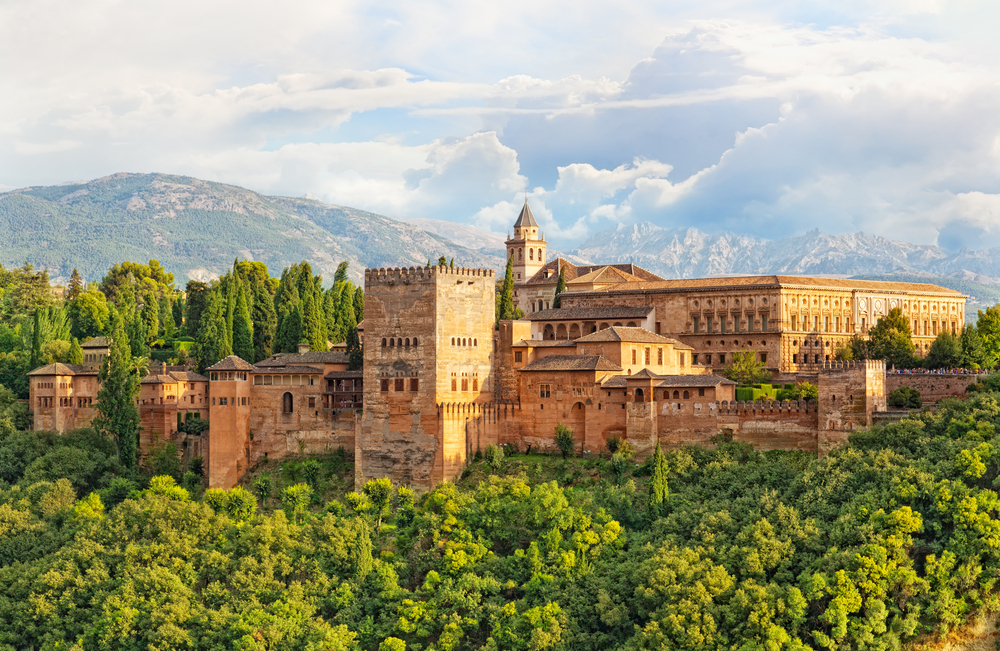Granada, the heart of Andalusia at the foot of the Sierra Nevada. With buildings such as the Alhambra, beautiful gardens and a rich history, the city enchants every visitor. The music scene, especially the guitar makers, are also world-famous.
The history of Granada has been marked by many peoples. Starting with the Phoenicians and Iberians, it leads through the Romans to the Moors. And finally, we are left behind in today’s Spain . The heritage of many cultures is still clearly felt in Granada. The Phoenicians laid the foundation stone, the Romans declared it the capital of the province and the Moors left behind magnificent architectural buildings. The strong influences of the Orient are also part of this city.
The Alhambra – The Red Castle

The Alhambra is probably the most famous sight in Granada and is known to most people. The rush of visitors is so strong that a daily limit of 8000 visitors has been introduced.
The castle, with its reddish walls, occupies a strategic position on al-Sabika Hill in the east of the city. It is of Moorish origin and was built in the early Middle Ages. However, it owes much of its current appearance to the time of the 13th century.
Including the gardens, water canals and fountains, the area covers about 14 hectares. Inside the fortress wall are the Nasrid Palaces, the Citadel, the Palace of Charles the Fifth and some churches and monasteries.
Since 1984, the building complex has been a World Heritage Site.
Capilla Real – The Royal Chapel

The Capilla Real burial chapel, built in 1517, is the southeastern extension of Granada Cathedral. The building mixes elements of the Gothic, Renaissance and Baroque styles.
The chapel houses the remains of the Catholic kings and queens Ferdinand II, Isabella of Castile, Joan of Castile, Philip the Fair. Crown Prince Miguel da Paz, who died at the age of two, also found his final resting place here.
The tombs of Philip the Fair and Joan of Castile are the only ones made of white Carrara marble.
In the associated sacristy museum, treasures such as valuable panel paintings by Botticelli or personal belongings of the kings are kept.
Monasterio de San Jerónimo

The Roman Catholic monastery, located west of the centre, is under the protection of St. Jerome. It was built in 1504 in the Renaissance style. In the early 19th century, it was taken by Napoleonic troops and almost destroyed. A restoration followed about a hundred years later.
The church was laid out in the shape of a cross according to the typical plan of the Augustinian orders, to which the Hieronymites also belong, and has a raised choir at the foot of the altar. Particularly worth mentioning is the lavish ceiling painting of the church.
Part of the monastery are also two cloisters that enclose the small monastery garden.
The White Caves of Sacromonte
Sacromonte – a neighbourhood and a mountain in Granada at the same time – impresses with its caves as well as its consolidated flamenco culture.
From 1492 onwards, the white caves served as dwellings for those gypsies who came to Spain from India . The gitanos, as these gypsies were called, were sometimes not allowed to speak their own language or wear their traditional clothing. They were also often forbidden to sing and dance. Thus, flamenco culture developed in the white caves and was spread even more by the emigrants after the Spanish Civil War in the 1930s.
Today, the white caves are an open-air museum. Some of them are also rented out as guest rooms.


